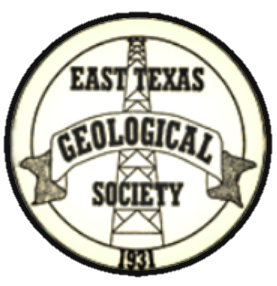East Texas Geological Society,
I believe the unprecedented events in East Texas and Texas as a whole, to our power grid warrants a special letter to the membership to distribute unbiased facts regarding these events. We are a scientific society and we need to be careful not to become embroiled in “political spin”, but we need to have a clear understanding of the facts so we can be part of a constructive dialogue to avoid a repeat of what has occurred in the future. At the bottom of this letter are a series of graphs of power use broken down by energy source for each of the major grids in the US for the period immediately preceding our very cold weather through the very cold temperatures. The U.S. Energy Information Administration, the gold standard for energy data in this country, publishes the data. The purpose of this letter is not to discuss the many policy implications but to provide some first order factual analysis of what this data demonstrates.
Focusing first on the Texas data (ERCO) we can make the following observations:
Prior to the hard freeze (2/4-2/8), Texas demand averaged some 38K MWhours and was sourced over this period an average of 29% wind and solar, 31% natural gas, 26% coal and 14% nuclear.
During the hard freeze period (2/8-2/15) with local low temperatures of some 15-25 degrees F, the ERCO grid responded as follows:
Total demand increased over 58% and was supplied.
Wind and solar decreased 81% to some 3% of supply.
Natural gas increased some 233% to some 67% of supply.
Coal increased 30% but it’s share of supply decreased to 22%.
Nuclear stayed stable with no change and it’s share of supply decreased to some 8%.
During record freeze temperatures of some -5-10 degrees F for the period (2/15-2/18), the ERCO grid responded as follows:
Total demand continued to increase but ERCO total supply decreased some 28% and did not meet supply and blackouts / outages were widespread.
Wind and solar continued to decrease to 2% of supply.
Natural gas decreased some 27% but was still 68% of available supply. This was still some 142% above normal levels, but this base load decrease was the primary trigger to the power outages. Clearly, some natural gas surface facilities were not prepared for these lowest temperatures and will be an area of further investigation.
Coal decreased 30% and was still 21% of supply.
Nuclear had a slight decrease and remained 9% of supply.
Looking briefly at the other power grids impacted by these very cold temperatures and storms, we can make some obvious comparisons to the Texas (ERCO) experience. The Southwest power pool (SWPP) and the Midcontinent (MISO) were impacted and are the only other grids that have a major portion of normal electricity demand provided by wind power. They experienced the following:
Wind power dropped dramatically and early in the storms, very similar to Texas. The SWPP wind power normally provides some 39% of power and decreased 85% to 5% of power needed. The MISO wind power normally provides some 28% of power and decreased 74% to 8% of power needed. Clearly the wind issues experienced by Texas were not unique.
Both SWPP and MISO ramped up power supply substantially from coal and natural gas to cover the increased demand and wind power decrease. In both of these other power grids, relative to Texas, a much larger share of the increased demand was provided by coal. The increased demand on these grids was shared more equally between coal and natural gas.
In summary, Texas experienced very large decreases in wind power similar to those decreases experienced by other adjoining power grids. Texas met the very large increases in power demand primarily by massive increases from natural gas power plants but was unable to sustain all of that supply when record freeze temperatures occurred. Other adjacent power grids met the increase in demand and loss of wind power by both coal and natural gas, with coal playing a much larger role than in Texas.
This letter is not intended to be an anti “green power” letter but as our State Geologist Scott Tinker states, we must first “go honest to go green”. He makes that case eloquently in his recent op ed here: https://thehill.com/opinion/energy-environment/534914-we-must-go-honest-to-go-green?rnd=1611157798
There will be many challenges in our evolving energy landscape and as earth scientists, we have an important role to play in providing sound scientific data and analysis to that debate. There were plenty of problems to be addressed by all electric power sectors in this recent experience.
Ernest LaFlure
President East Texas Geological Society
February 24, 2021
Data quoted in letter estimated from US EIA graphs below:

